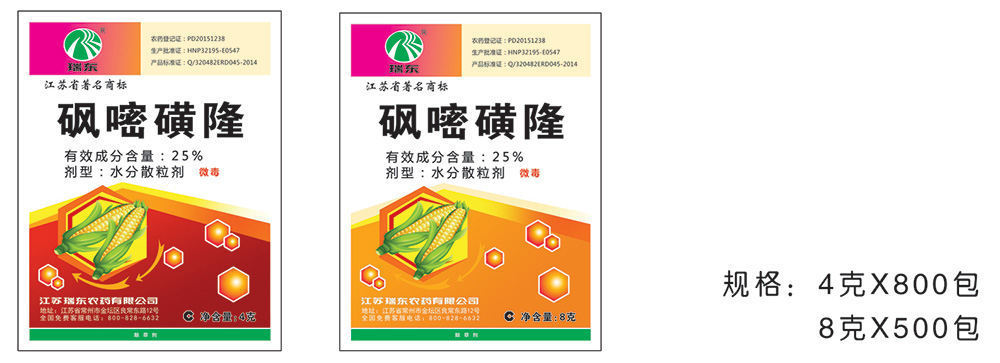|
Technical requirements for use:
The application period is the 3-5 leaf stage after the corn seedling, the 2~4 leaves of gramineous weeds, the 3~4 leaf stage of broad-leaved weeds, and the 6-leaf stage of perennial weeds. When the weeds are small and the moisture is good, rimsulfuron is used in low amounts; Weeds are larger, and high amounts are used in arid conditions. This product can be applied at most once per season.
|
|
Product Performance:
This product is an ultra-efficient sulfonylurea selective systemic conductive Herbicide. This product can be absorbed by the stems, leaves and roots of plants and conducted rapidly, so that sensitive plants stop growing. The symptoms of weed damage are yellowing, greening and whitening of the heart leaves, and then the other leaves turn yellow from top to bottom. Generally, the symptoms of weed damage can be seen 3-4 days after application, and the weeds die in 1-3 weeks.
|
|
Notes:
1. Different corn varieties have different sensitivities to this product, suitable for horsetooth, semi-horsetooth, hard corn, not recommended for waxy corn, burst corn, sweet corn and various types of inbred corn; Generally, corn is sensitive to this product before the 2-leaf stage and after the 10-leaf stage. 2. There is no residual pesticide damage to wheat, garlic, sunflower, potato, soybean, etc., but there is pesticide harm to cabbage, sugar beet, spinach, etc. 3. The safe interval between pesticide application and subsequent crop is 90 days. 4. Long-term drought, low temperature and air relative humidity below 65% should not be applied; Generally, the temperature is low in the morning and evening, and the wind is small; It is best to add surfactant when applying pesticides in drought; Long-term drought such as recent rain, after the rain in the field humidity improves, then apply pesticides or irrigation conditions after irrigation; Although the application time is delayed, the weeding effect will be better than that before the rain. 5. Pay attention to protection when applying pesticides, such as wearing masks, protective risks, etc. Not accessible to pregnant and lactating women. 6. The residual chemicals and waste packaging materials generated during the application process cannot be discarded at will and should be disposed of uniformly. The water used to clean the pesticide applicator should not pollute fish ponds, rivers and other water bodies. It is forbidden to clean pesticide application equipment in rivers and ponds and other water bodies.
|
|
First aid measures for poisoning:
This agent is irritating to the eyes and not irritating to the skin. No large ingestion of large amounts, no symptoms of systemic toxicity; If it accidentally splashes in the eyes or on the skin, rinse immediately with plenty of water for at least 15 minutes; If you eat it by mistake, you can induce vomiting, and go to the hospital for diagnosis and treatment with this label as soon as possible, there is no specific antidote.
|
|
Storage and transportation methods:
1. This product should be stored in a cool, dry place, away from food, feed and children. 2. Avoid direct sunlight and rain during transportation. 3. The stacking height of the package during transportation should not be higher than 3.0 meters, and it should be handled with care when loading and unloading.
|
